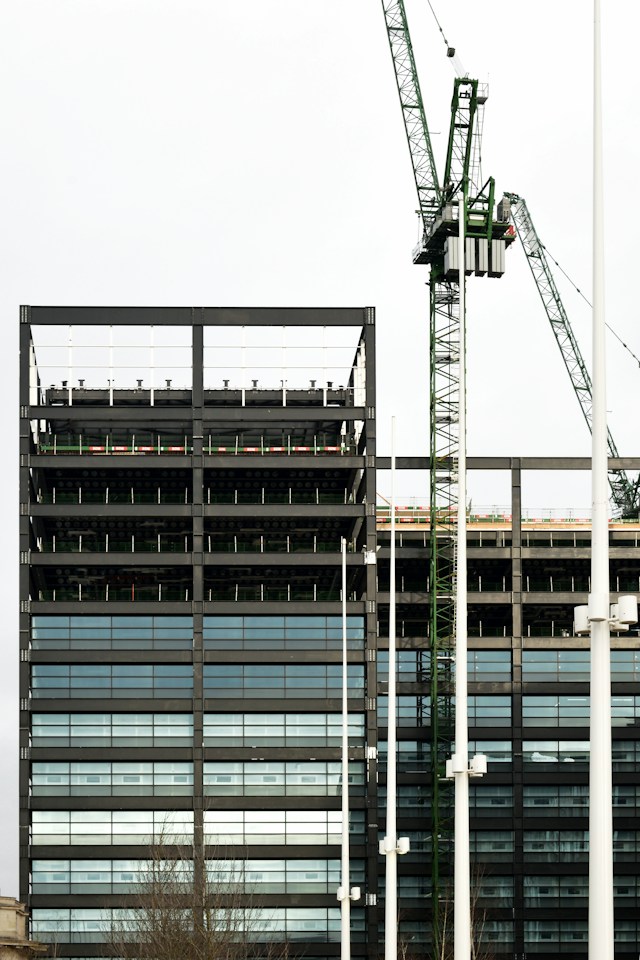Your challenge as architects and designers is to create spaces that not only meet the current demands of users, but also accommodate their evolving needs. This requires an understanding of adaptive design principles, innovative materials, energy systems, and the impact of climate on buildings. It also requires a commitment to sustainable and environmentally friendly practices. In this article, we delve into the art and science of designing buildings that can adapt to the changing needs of users.
The Principles of Adaptive Design
Adaptive design refers to architecture that resizes, reshapes, and reinvents itself in response to changing user needs and circumstances. This principle considers a building as a living entity, capable of evolving over time.
Avez-vous vu cela : How to design for biodiversity in urban settings?
The premise of adaptive design lies in understanding the fluidity of user requirements. The spaces we inhabit today may not serve us efficiently tomorrow. As life progresses, a single user might need different things from a space. A family could grow, a business could expand, or an individual might develop new interests or face mobility issues.
A key aspect of adaptive design is the integration of flexible systems. These systems can accommodate a variety of functions and easily adapt to changes. For instance, movable walls can transform a single open space into multiple smaller rooms. Retractable furniture can convert a workspace into a living area in a matter of minutes. Such adaptability ensures that a building stays relevant and useful throughout its lifecycle.
Sujet a lire : What are effective solutions for managing stormwater in urban developments?
Sustainable Materials and Energy Systems
Sustainable architecture is not just about reducing the environmental impact of buildings. It also plays a significant role in adaptive design. By using sustainable materials and energy systems, you can design buildings that are not only eco-friendly but also flexible and comfortable for users.
Sustainable materials are durable, low maintenance, and adaptable for different uses. These materials include reclaimed wood, recycled metal, or plant-based polyurethane rigid foam. They are versatile, allowing for easy modification and adaptation.
On the other hand, incorporating innovative energy systems, like solar panels or geothermal heating, makes a building resilient to fluctuations in energy costs and availability. They also contribute to a building’s adaptability, allowing it to maintain optimal comfort levels for users in varied climatic conditions.
Factoring in Climate in Building Design
Climate heavily influences how a building should be designed. From the building orientation to the selection of materials and systems, climate adaptation needs to be incorporated at the design stage.
In architecture, climate-responsive design refers to designing buildings that can adapt to their external environment. For example, in hot climates, a building should minimize heat absorption by using reflective materials and maximizing natural ventilation. In colder regions, a building should maximize solar heat gain and have appropriate insulation to retain heat.
This level of adaptation makes buildings more comfortable for users and reduces reliance on mechanical heating and cooling systems, thus saving energy.
The Role of User Feedback in Adaptive Design
Understanding the changing needs of users is pivotal to adaptive design. Direct feedback from users helps in designing spaces that are truly responsive to their needs and aspirations.
Participatory design, where users are actively involved in the design and decision-making process, is one way of capturing user feedback. It can lead to the creation of spaces that are more in tune with people’s evolving needs.
Designers can also leverage technology to gather user feedback and insights. Building management systems and sensor networks can provide real-time data on how different spaces within a building are being used. This data can inform future design interventions, ensuring that the building continues to serve its users effectively.
The Power of Reuse in Adaptive Architecture
The concept of reuse is integral to adaptive architecture. It involves repurposing existing buildings or materials to serve new functions or meet new needs.
Rather than demolishing an old building to make way for a new one, adaptive reuse can transform it into a completely different space. This reduces the need for new materials and energy, lowering the environmental impact.
Reuse extends to materials too. Salvaged materials can be repurposed in innovative ways, adding character to a space and reducing waste. For instance, reclaimed wood might serve as a feature wall, or old bricks could become a stylish fireplace.
The practice of reuse not only conserves resources but also offers the potential for a building to tell a story, connecting its past with its present and future.
Designing buildings that can adapt to users’ changing needs is an ongoing process, a dance between the needs of users, the constraints and opportunities of the environment, and the vision of the architect. By embracing adaptive design principles, sustainable materials and energy systems, and the power of reuse, you can create buildings that stand the test of time and remain relevant and valuable to their users.
Universal Design for Public Spaces
Universal design refers to the creation of spaces that are accessible and usable by all people regardless of age, ability, or status in life. In the context of adaptive architecture, universal design principles can help create public spaces that are flexible and accommodating to a diverse range of users.
Public spaces, such as parks, plazas, and community centers, are shared environments that serve multiple purposes. They must be designed to accommodate a wide variety of activities and user needs. For instance, a park may be used for jogging in the morning, as a play area for children in the afternoon, and as a gathering place for community events in the evening.
With universal design, these spaces can be equipped with features such as adjustable lighting, flexible seating arrangements, and easily navigable paths, making them adaptable to different uses and user needs at different times.
Furthermore, universal design factors in inclusivity. For instance, incorporating ramps alongside stairs, or using tactile paving for visually impaired users. These elements ensure that public spaces are accessible to all members of the community, irrespective of their physical abilities or age.
Adaptive reuse can be a powerful tool in applying universal design principles to public spaces. For instance, an old railway line can be transformed into a pedestrian walkway.
By adopting universal design principles in the design of public spaces, architects and designers can create environments that are not just physically inclusive, but also adaptable and flexible to the changing needs and activities of the community they serve.
The Impact of Climate Change on Building Adaptation
As architects and designers, the challenge of designing adaptive buildings is compounded by the reality of climate change. Climate change brings about unpredictable and extreme weather patterns which buildings must be designed to withstand.
Climate-responsive design principles go a long way in creating buildings that are adaptable to these climate changes. For instance, in coastal areas that are increasingly prone to flooding due to rising sea levels, buildings can be designed with ground floors that can easily be cleaned and dried after a flood. This allows for the building adaptation in the face of new climate realities.
Similarly, energy efficiency has become a core consideration in designing adaptive buildings in the face of climate change. Buildings consume a significant amount of the world’s energy, contributing to global warming. Therefore, designing energy efficient buildings is a crucial step in mitigating the effects of climate change.
This includes using high-insulation materials, ensuring efficient energy systems for heating, cooling and lighting, and integrating renewable energy sources, such as solar panels or wind turbines, into the building design. These steps not only make buildings more adaptable to changing weather patterns, but also reduce their carbon footprint.
Conclusion: Embracing the Future of Adaptive Architecture
Designing buildings that can adapt to users’ changing needs, while remaining energy efficient and responsive to the impact of climate change, is no small feat. It calls for a shift in traditional design thinking, a willingness to embrace innovative materials and technologies, and a commitment to sustainability and inclusion.
Architects and designers must constantly learn, innovate, and adapt their practices to keep pace with the changing world. By applying adaptive design principles, such as universal design and adaptive reuse, they can create buildings and public spaces that are versatile, inclusive, and prepared for the future.
Today, more than ever, architects are called upon to celebrate support for climate responsive design and love insightful approaches that harness the potential of adaptive architecture. We must all play a part in this journey, letting our longer contribution towards sustainable building practices serve as a report of our shared commitment to a greener, inclusive, and adaptable built environment.











